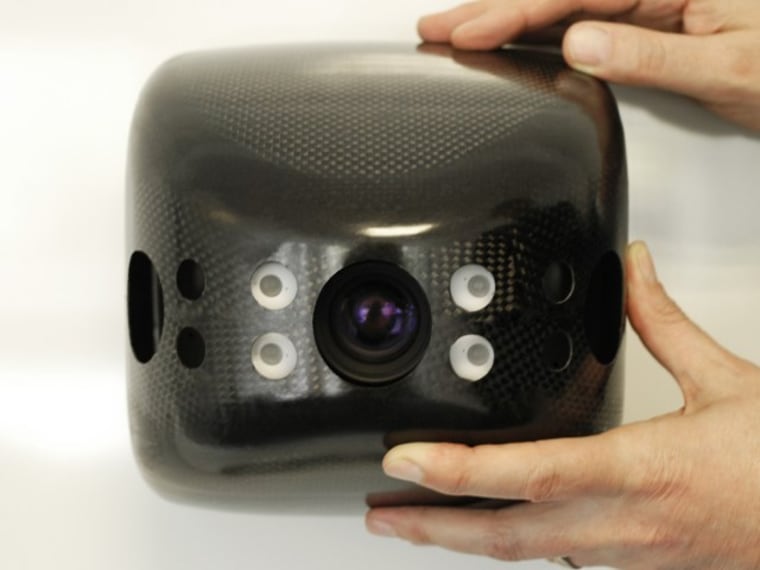If you're going to have a group of drones flying around each other, it would probably be wise to have each of them know where the other is. But when operating autonomously, this can be difficult. Fraunhofer's new "eye-bots," however, use special 3-D-sensing cameras to keep an eye on each other.

The researchers picture swarms of these drones monitoring crowds or traffic, or being deployed by emergency workers in order to efficiently scan over rubble. With a six-foot wingspan, however, they're big enough to be dangerous, and avoiding collisions with people, structures and each other is a critical feature.
Other drones communicate their position to each other in different ways, like synchronizing with a central camera or communicating wirelessly with one another. Fraunhofer's eye-bots have special imaging sensors that show them not just the world around them in black and white, but also how far away every object and surface is. They use a technique called time-of-flight analysis that compares two images of what the sensor sees and determines distances using sophisticated calculations.
The end result is that the drones can detect the exact distance between them and any object up to 25 feet away. With these depth-detecting cameras, drones could build detailed 3-D models of streets and buildings, not unlike what has been done using Microsoft's Kinect depth-sensing camera. And of course they have normal cameras on board, too, for capturing faces, text and other critical features.
Autonomous drones are rare today, but research like this eliminates the objections to their use around homes and crowds. It may not be long before eye-bots are spied above the next protest or disaster relief team.
Devin Coldewey is a contributing writer for msnbc.com. His personal website is coldewey.cc.